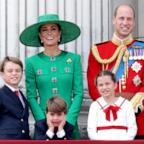Feds: Pilot triggered steep climb in Buffalo air crash
WASHINGTON -- A pilot on the flight that crashed last month in Buffalo apparently triggered the accident by yanking the turboprop into a sudden steep climb that caused it to lose control, federal accident investigators said Wednesday.
Continental Connection Flight 3407 slammed into a house in Clarence Center, N.Y., on Feb. 12, killing all 49 people aboard and a man in a house that was engulfed in flames. The flight, operated by regional carrier Colgan Air, was the first fatal U.S. commercial airline crash in 2½ years.
In the most detailed account to date of what likely caused the crash, the National Transportation Safety Board said the pilots may have misunderstood a warning they received as they neared Buffalo. The report raises broad questions about how the pilots were trained and hints that they may not have adhered to strict rules governing conduct in the cockpit.
The report also said evidence so far rules out icing as a cause of the crash. The plane was flying in freezing rain and snow and the pilots could be heard on the cockpit recorder discussing ice on the aircraft, but the NTSB found that ice had a "minimal impact" on how the plane performed.
"The tragedy of Flight 3407 is the deadliest transportation accident in the United States in more than seven years," said acting NTSB Chairman Mark Rosenker. "The circumstances of the crash have raised several issues that go well beyond the widely discussed matter of airframe icing."
As the plane prepared to land, a warning device known as a "stick shaker" activated, the NTSB said. The stick shaker alerts pilots that they are flying too slowly by vibrating the control column. If a plane gets too slow, it can "stall" — not an engine stall, but an aerodynamic stall where air flowing over the wings can no longer keep the plane aloft.
Pilots are trained to respond to the stick shaker by immediately lowering a plane's nose and increasing power. But the pilots on the Colgan Air flight instead pulled the nose up aggressively. A control column movement to lift the nose was captured by the plane's crash-proof data recorder, the NTSB said.




